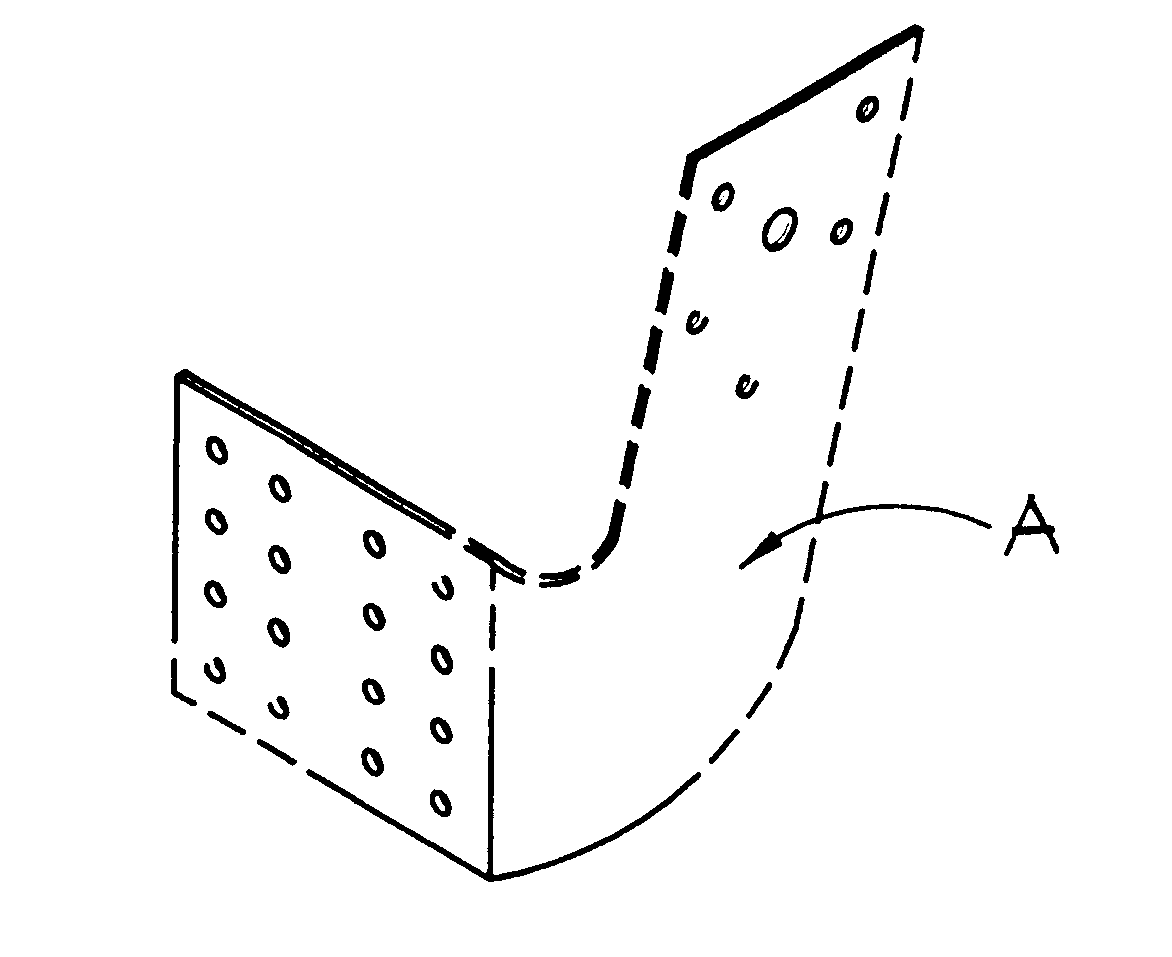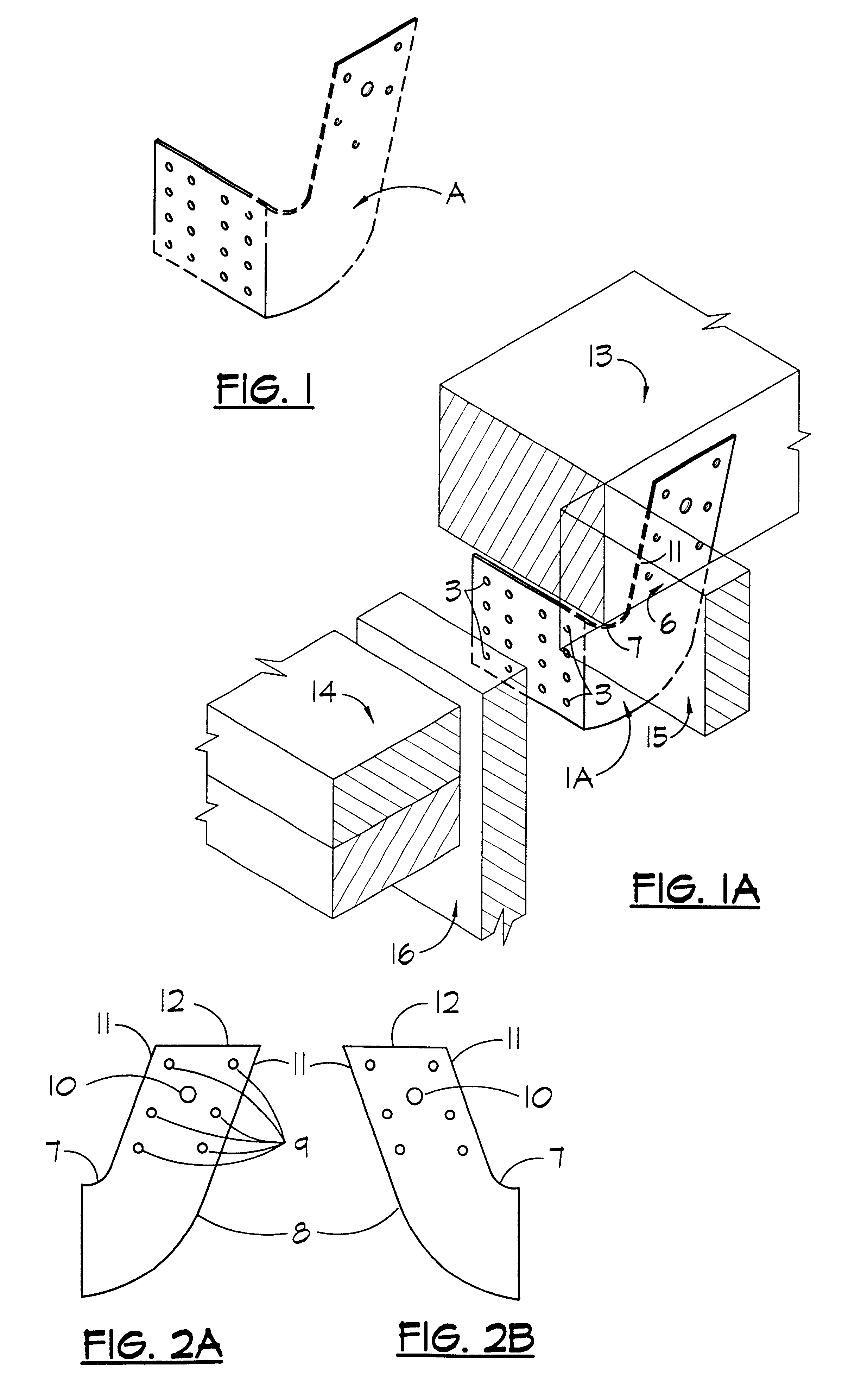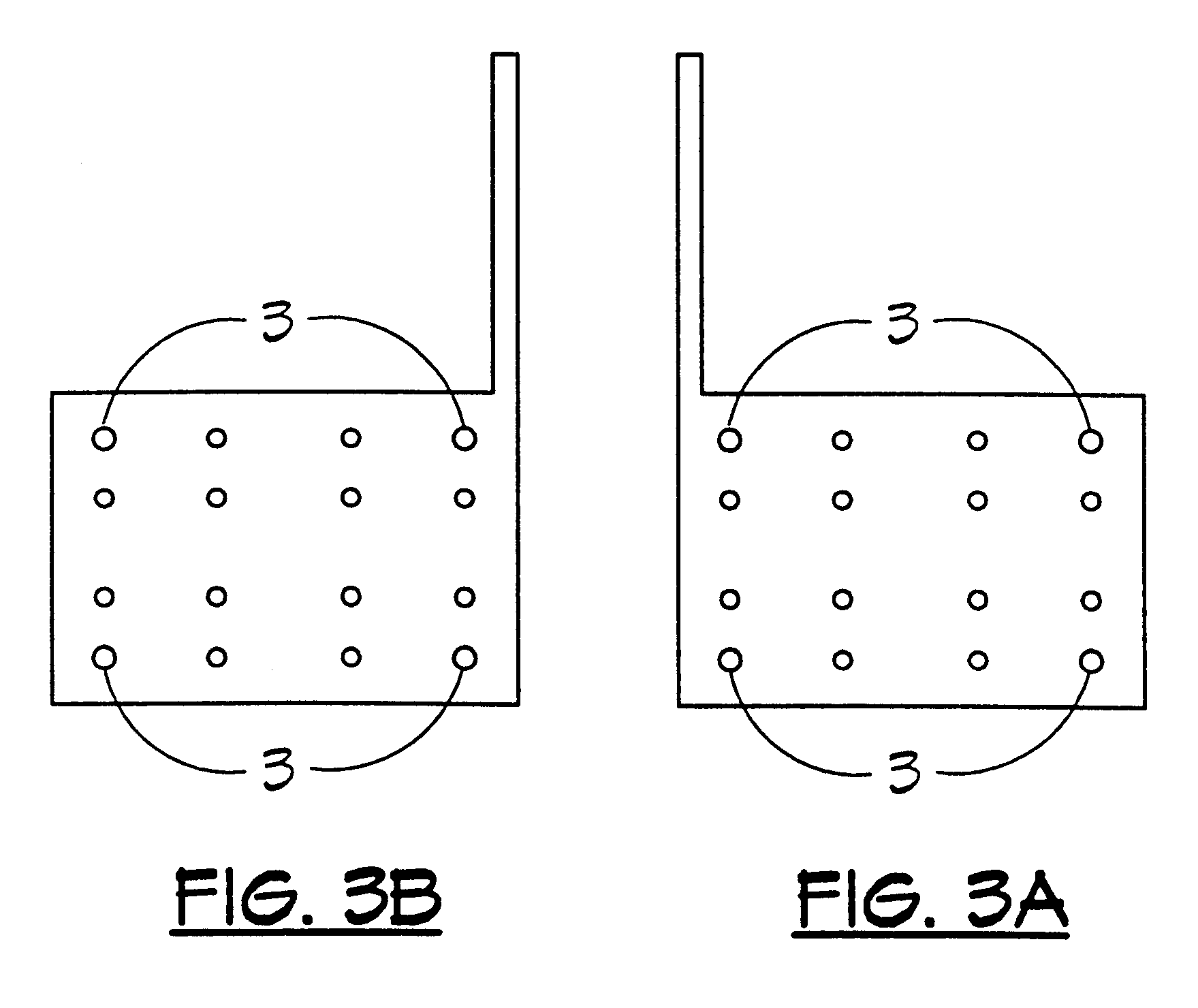Hurricane tie system for retrofit on existing structures
- Summary
- Abstract
- Description
- Claims
- Application Information
AI Technical Summary
Benefits of technology
Problems solved by technology
Method used
Image
Examples
Embodiment Construction
Refer now to FIG. 1 which is a perspective drawing of a preferred embodiment of tie "A" of the invention. The unitary sheet metal tie "A" consists of a rectangular base member 1 with straight nail holes 2, slotted up and down nail holes 3, and straight sides 4. The base member has a right-angled bend 5 that includes a generally trapezoidally-shaped web member 6, that is offset to the axis of the right-angled bend by a radius 7 that is about one-half of the width of the base member. The outer radius 8 is about one and one-half of the width of the base member.
The web member 6 has nail holes 9 and a lag-bolt hole 10 in the upper part of the member. The sides 11 are generally straight and parallel, and are tilted between 10 and 20 degrees away from the axis of the right angle bend. The top side 12 of the web member is generally parallel to the bottom of the base member.
The right-angle bend can be bent left or right, causing the tie to be left-handed or right-handed. FIG. 1A shows right-...
PUM
 Login to View More
Login to View More Abstract
Description
Claims
Application Information
 Login to View More
Login to View More - R&D Engineer
- R&D Manager
- IP Professional
- Industry Leading Data Capabilities
- Powerful AI technology
- Patent DNA Extraction
Browse by: Latest US Patents, China's latest patents, Technical Efficacy Thesaurus, Application Domain, Technology Topic, Popular Technical Reports.
© 2024 PatSnap. All rights reserved.Legal|Privacy policy|Modern Slavery Act Transparency Statement|Sitemap|About US| Contact US: help@patsnap.com










